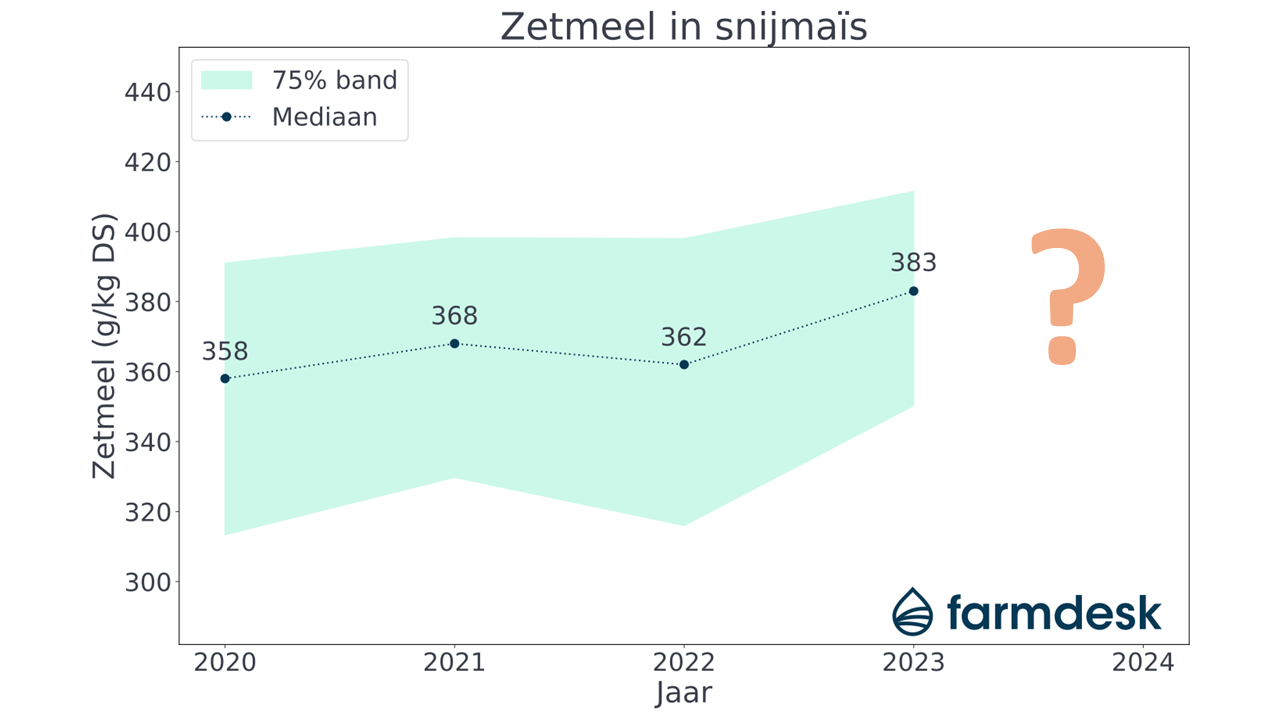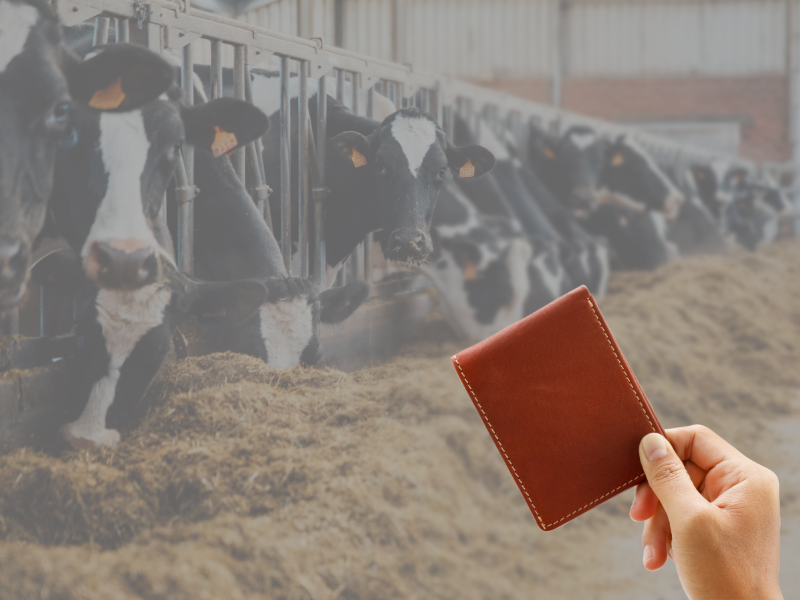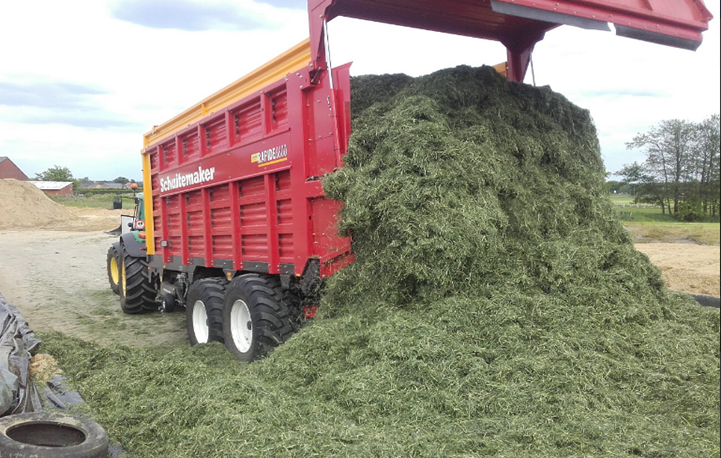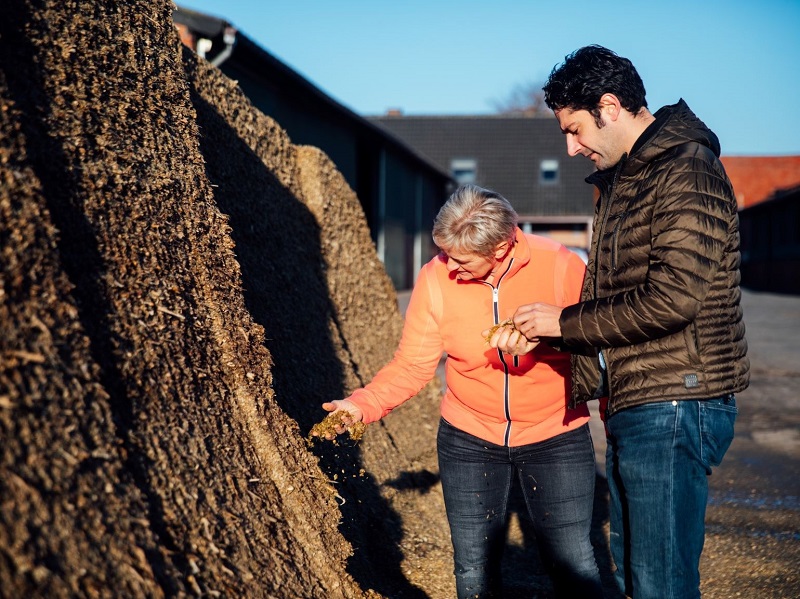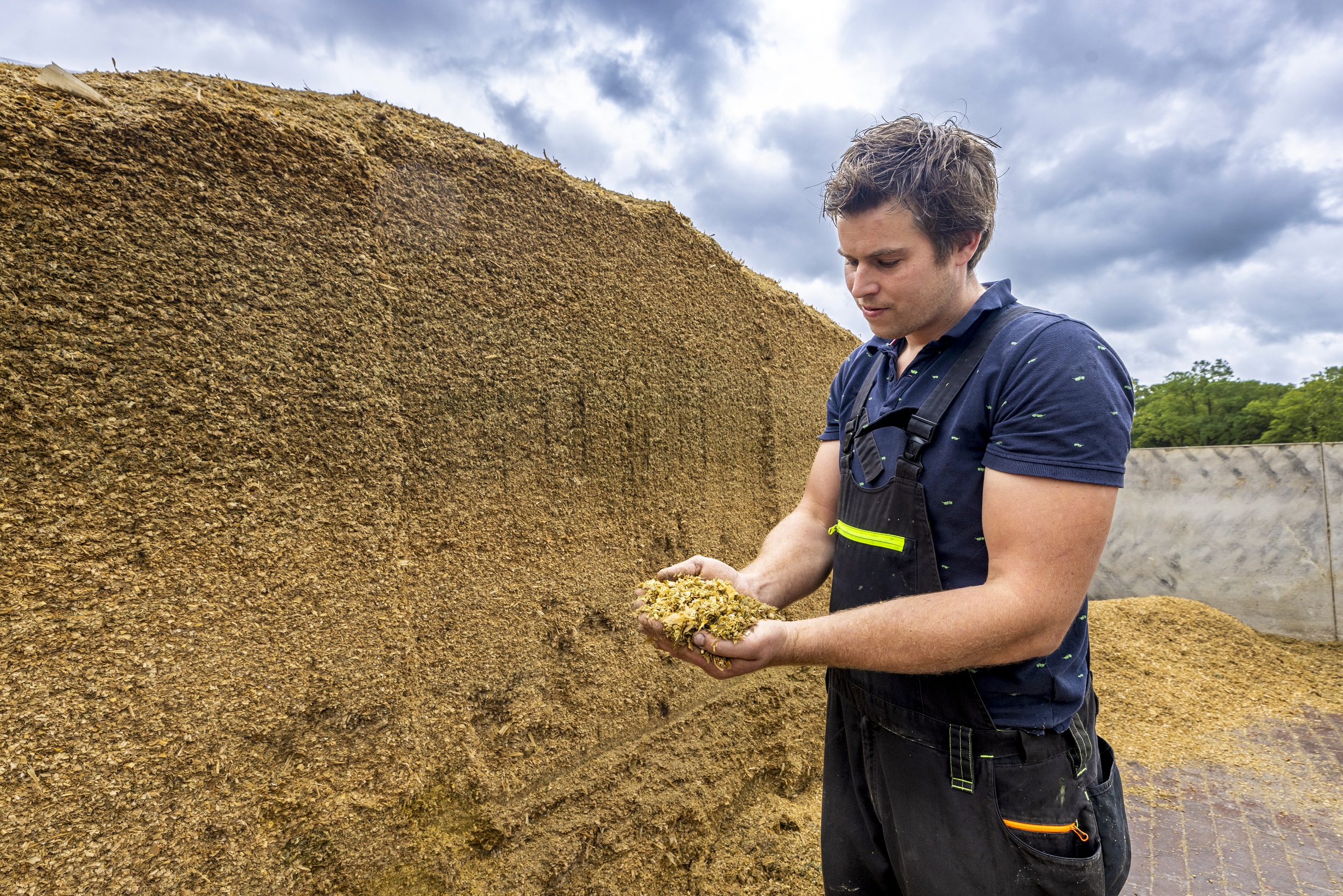Farmdesk's economy module recently received a strong expansion, with a whole series of performance indicators developed and visualized. More info about the performance indicators and their development can be found in this article.
In a previous article, we took a closer look at milk production and associated efficiency. This showed that (measuring) milk production per cow is the highway to good farm economics.
In what follows, we are pleased to share our insights on the farm economics implications of choosing feedstuffs, particularly on the use of forage, concentrates and by-products in the ration.
In the figure below, consumption of roughage (in kg dry matter) was plotted per cow and per 100 kg of measured milk as a function of feed profits. As in the previous analysis, the groups FD-below (25% cattle farmers with lowest feed gains), FD-mid (25-75%) and FD-top (75-100%) are shown, as well as the averages of each group (the black crosses) and a distribution cloud indicating the trend.
From the analysis of crude feed consumption per cow (the left figure below), it becomes clear that cows that consume a lot of roughage will, on average, provide higher feed profits. Consumption of this roughage does not stand alone, as the roughage must also be efficiently converted to a lot of milk.
We see this efficiency reflected in the figure on the right. The higher the efficiency of conversion, the lower the crude feed consumption per 100 kg of measured milk will be, resulting in a higher feed profit at the same milk price.
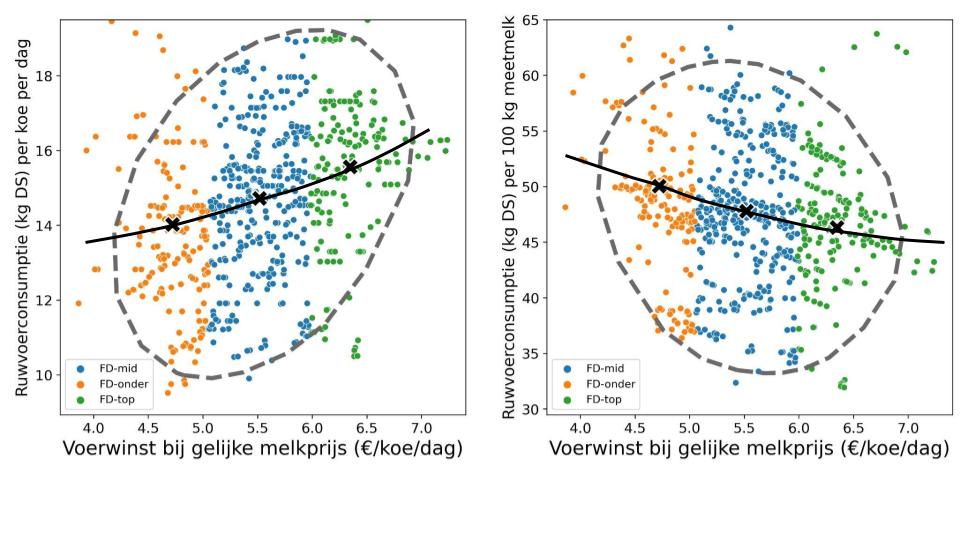
Adequate forage intake is also important. From the left figure below, it is clear that the animals with the highest concentrate feed intake belong to farms that record the highest feed gains.
In terms of efficiency improvement we cannot expect much from concentrate feed, which is what we see on the right figure below. Rather, the effects of force feed consumption per 100 kg of measured milk show a changing picture in terms of feed efficiency improvement.
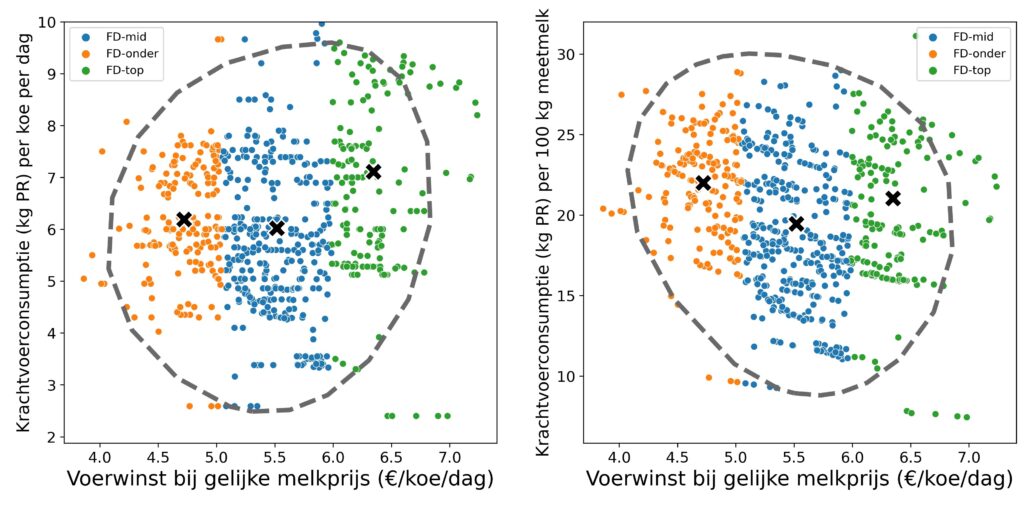
The feed profit improvement from the middle group to the top is accompanied by higher use of concentrate feed, where the profit is not in efficiency (or concentrate consumption per 100 kg of measured milk). Perhaps the additional concentrate feed consumption is going to increase the rate of forage passage so that relatively more roughage can be absorbed, thus achieving higher milk production, resulting in higher feed profits.
Indeed, concentrate feed accelerates digestion and provides high total DS intake which must come primarily from additional forage consumption (and corresponding higher feed gain, as demonstrated in the first figure).
If concentrate feed is used to make the ration rapidly digestible and balanced, total DS intake can increase and digestive efficiency improve, giving rise to a maximization of productivity (which we saw reflected in a previous article), coupled with efficient use of both roughage and concentrate feed.
The idea that additional intake of by-products produces a better feed profit per cow at the same milk price does not really hold true. Hardly any differences were measured between the middle and top groups. Presumably between the 2 top groups the differences/gains are no longer to be gained with by-products. In order to evolve from the middle group to top group, it is more important to optimize digestion through the use of adapted concentrate feed and to strive for a higher forage efficiency that results in a higher feed profit.
In a subsequent article in this series, we will also learn that the quality of forage plays a determining role in this.


